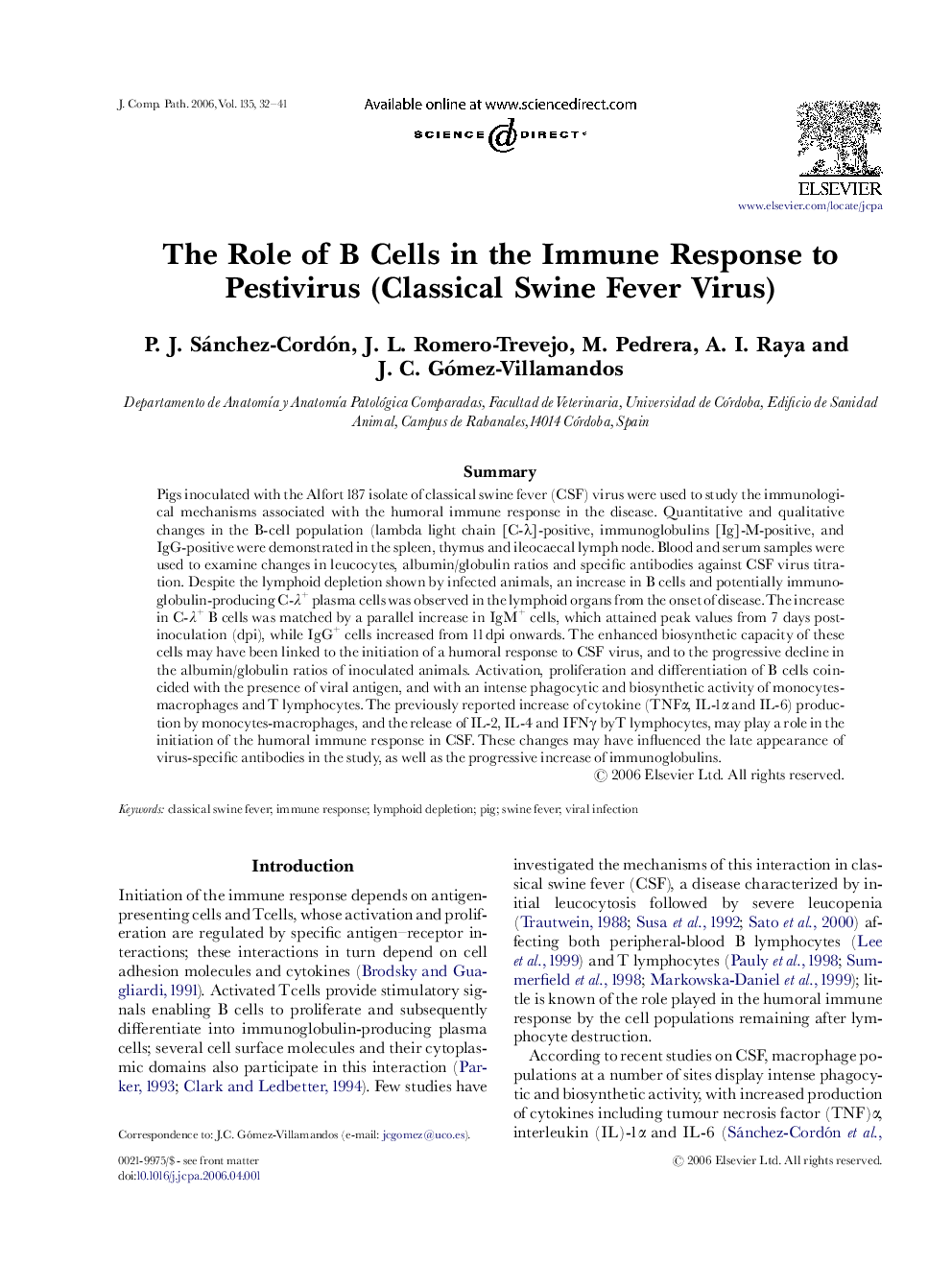| Article ID | Journal | Published Year | Pages | File Type |
|---|---|---|---|---|
| 2438581 | Journal of Comparative Pathology | 2006 | 10 Pages |
SummaryPigs inoculated with the Alfort 187 isolate of classical swine fever (CSF) virus were used to study the immunological mechanisms associated with the humoral immune response in the disease. Quantitative and qualitative changes in the B-cell population (lambda light chain [C-λ]-positive, immunoglobulins [Ig]-M-positive, and IgG-positive were demonstrated in the spleen, thymus and ileocaecal lymph node. Blood and serum samples were used to examine changes in leucocytes, albumin/globulin ratios and specific antibodies against CSF virus titration. Despite the lymphoid depletion shown by infected animals, an increase in B cells and potentially immunoglobulin-producing C-λ+ plasma cells was observed in the lymphoid organs from the onset of disease. The increase in C-λ+ B cells was matched by a parallel increase in IgM+ cells, which attained peak values from 7 days post-inoculation (dpi), while IgG+ cells increased from 11 dpi onwards. The enhanced biosynthetic capacity of these cells may have been linked to the initiation of a humoral response to CSF virus, and to the progressive decline in the albumin/globulin ratios of inoculated animals. Activation, proliferation and differentiation of B cells coincided with the presence of viral antigen, and with an intense phagocytic and biosynthetic activity of monocytes-macrophages and T lymphocytes. The previously reported increase of cytokine (TNFα, IL-1α and IL-6) production by monocytes-macrophages, and the release of IL-2, IL-4 and IFNγ by T lymphocytes, may play a role in the initiation of the humoral immune response in CSF. These changes may have influenced the late appearance of virus-specific antibodies in the study, as well as the progressive increase of immunoglobulins.
